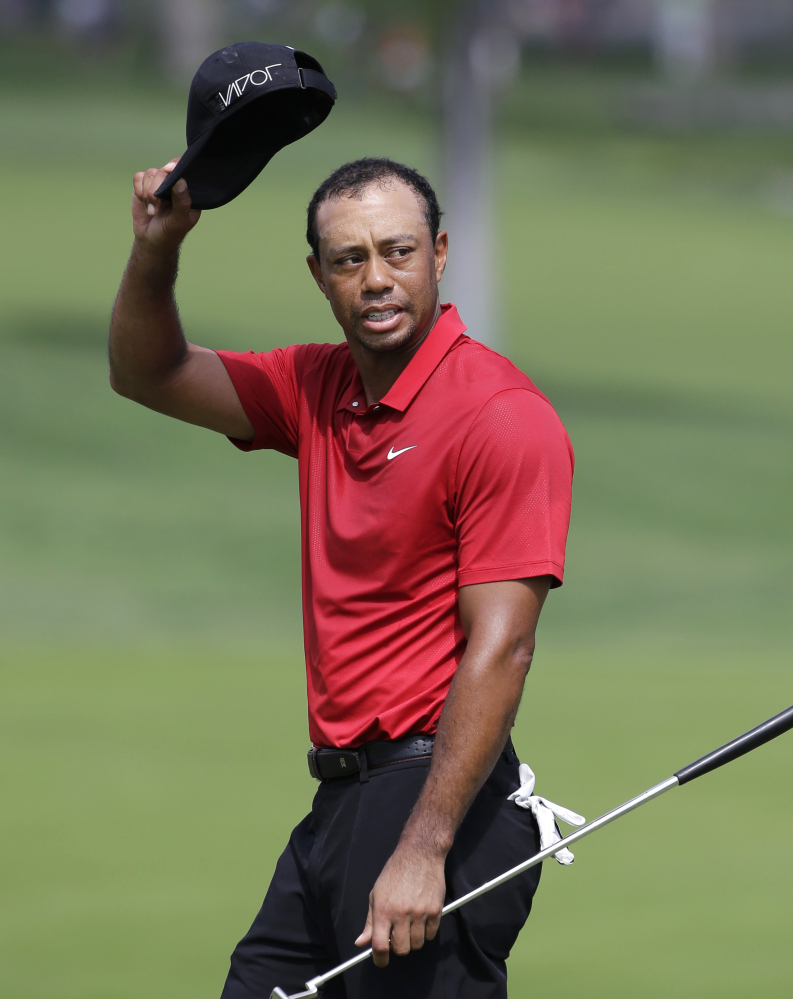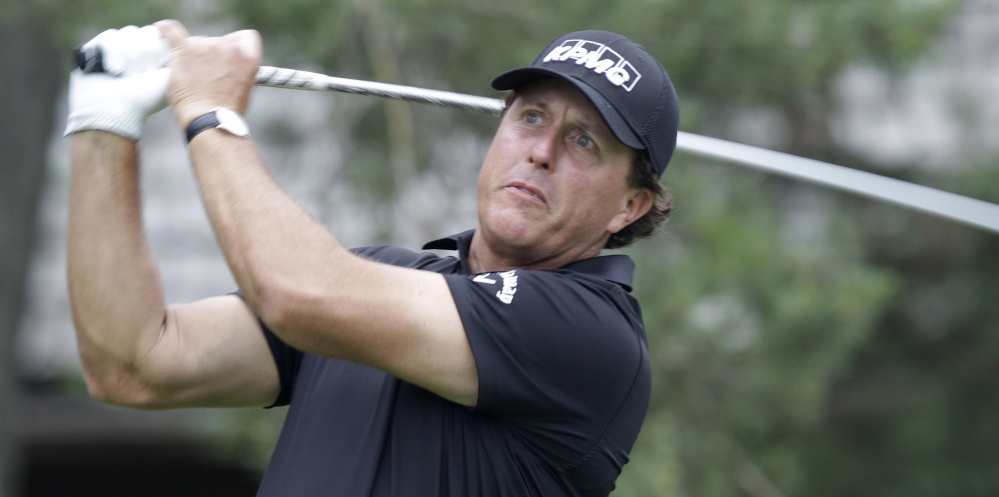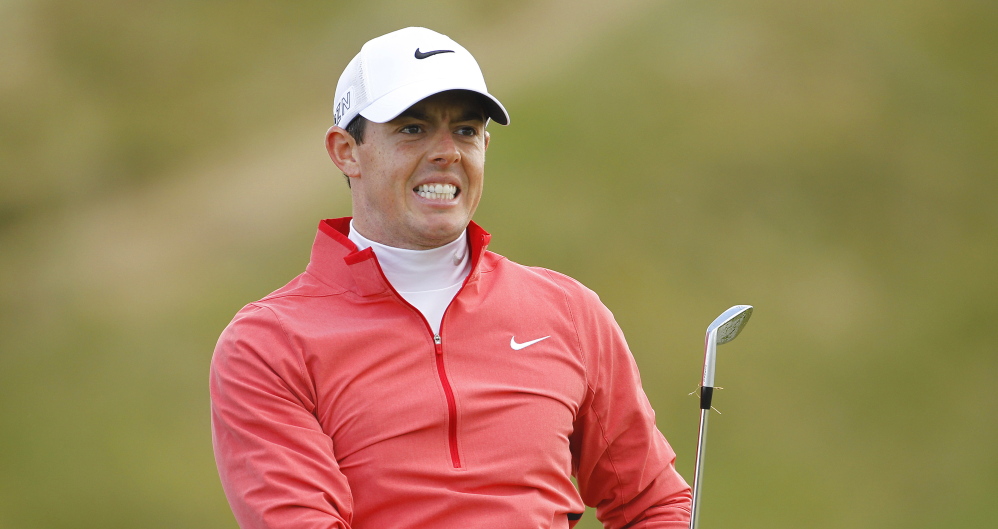UNIVERSITY PLACE, Wash. — The stars have aligned for this week’s U.S. Open at Chambers Bay. Literally, as in superstars.
Take for example, Tiger Woods, the biggest draw in golf.
A year ago, he didn’t play in the U.S. Open because of injury, and a few months ago, he wasn’t playing because he wasn’t competitive. Now, after finishing tied for 17th in the Masters, winning his 15th major this week no longer seems out of the question.
Look at Rory McIlroy, 26, who last year at this time was ranked No. 6 in the world. He is now unquestionably the best player in the world, having won two of the last three majors and finishing fourth in the other.
Years from now, golf historians might look back at the 2015 U.S. Open as being one of the defining moments in the game. A time when Woods and Phil Mickelson, the two biggest stars of their generation, are still relevant, fighting it out with young superstars such as McIlroy and Jordan Spieth.
It brings to mind the 1960 U.S. Open, when 47-year-old Ben Hogan was tied for the lead with two holes left. A 20-year-old amateur, Jack Nicklaus, had led with nine holes remaining. But in the end, it was 30-year-old Arnold Palmer who won.
And the drama this week will play out on a course that is grabbing as many headlines as the players, as it signifies so many firsts: The first time the U.S. Open has been held in the Northwest, the first time it has been played on a links course, and the first time it has been played on all fine fescue grass.
One thing seems certain: It will make great theater.
Here is a closer look at the stars of the show.
THE LEGENDS
They no longer are the favorites to win majors, but Woods and Mickelson are still the fans’ favorites based on gallery size, and that undoubtedly will continue at Chambers Bay. Both men are chasing history, and both desperately want to win this U.S. Open.
For Woods, his pursuit of Nicklaus’ record of 18 major titles has been stalled for seven years. When Woods beat Rocco Mediate in a playoff in 2008 to win the U.S. Open for his 14th major win, he seemed a lock to one day surpass Nicklaus.
But here he is, still at 14, having battled through knee and back surgeries, well-documented personal issues, and perhaps most remarkably, the yips. His shots around the green were so bad earlier this year that Woods took a self-imposed break, saying he would not return until his game was good enough to be competitive.
So Woods went to work at his home in Florida and returned for the Masters in April. Few thought he had a chance to even make the cut, much less finish in the top 20.
“I worked my (butt) off,” he said at the Masters. “People would never understand how much work I put into it to come back and do this again. But it was sunup to sundown.”
Woods, who also made the cut at the Players Championship, then put in two days of practice at Chambers Bay before finishing 71st in the Memorial last Sunday. He shot an 85 in the third round, his worst score as a pro.
Woods developed a blister on the forefinger of his left hand at the Memorial, and only putted during the first few days this past week to let it heal. He told reporters after the Memorial that he was happy he was heading into Chambers Bay after a final-round 74 instead of the 85.
“That would have been a lot more disconcerting, if I had shot yesterday’s round today,” he said. “We would have had to probably do a little bit more work than what I’m going to have to do now. We know that it’s close.”
Mickelson, who turns 45 on Tuesday, has finished second a record six times at the U.S. Open, and he needs to finally win one to be the sixth player to complete the career Grand Slam in the Masters era.
Like Woods, he got in some early practice at Chambers Bay. But unlike some previous U.S. Opens, where he spent many days preparing at the venue, this year he felt it was more important to get his game in good form.
He played the two weeks before this year’s Masters, where he tied for second. So he decided to also play the two weeks before the U.S. Open, finishing tied for 65th at the Memorial and tied for third Sunday in Memphis.
“I think that when I played well and won at Muirfield (in the 2013 British Open), I really didn’t spend an inordinate amount of time on the golf course,” Mickelson said of his pre-U.S. Open strategy. “I just got my game sharp.”
If Mickelson can do that again, he would seem to have a good shot to win his sixth major title and finally get that elusive U.S. Open win.
But Mickelson won’t be the only 45-year-old with a decent chance at winning. Jim Furyk, with little fanfare, has moved up to No. 3 in the world rankings and won the U.S. Open in 2003.
THE NEW LEADING MEN
Mickelson played well enough at the Masters this spring to win it most years. But Spieth, 21, was playing in a different stratosphere, setting several Masters scoring records with his four-shot victory.
For Woods and Mickelson, advanced age is not their biggest obstacle. It is McIlroy, Spieth – who is ranked No. 2 in the world – and even 26-year-old Rickie Fowler, who won the Players Championship.
What’s scary for their opponents is that McIlroy, who drives the ball as well as anyone on the PGA Tour, and Spieth, who might be the game’s best putter, should only get better.
Much has been made of a budding rivalry between McIlroy and Spieth, even though the two have said little to stoke it. Spieth, while freely admitting he wants to be the No. 1 player in the world, has been clear that he does not yet believe he is at McIlroy’s level.
McIlroy, who has won four majors, seemed almost amused at all the rivalry talk before last month’s Players Championship.
“Last year it was Rickie (Fowler), this year it’s Jordan, and it might be someone else,” he said. “There’s been four or five rivalries over the past year. As long as I am one of them, the other can be whoever it is.”
Spieth, who has two wins and nine top-10 finishes on the PGA Tour this year, has a not-so-secret weapon at his disposal this week: a caddie who knows every nook and cranny at Chambers Bay. Michael Greller is from University Place and was a part-time caddie at Chambers before landing the job with Spieth.
For Greller, little will be new. For most of the rest of the field, the course will be a big mystery.
WHAT TO MAKE OF CHAMBERS BAY
The USGA went outside the box seven years ago when it selected Chambers Bay, which had opened about eight months earlier, to host the 2015 U.S. Open.
You could almost hear the golf world groan, “Huh?” For years, only courses with long, illustrious histories were picked to host the national championship.
But then again, this course was made for the U.S. Open. Hosting a U.S. Open was the vision of John Ladenburg, who came up with the idea of turning what had been a gravel and sand mine into a golf course, but not just any golf course: one that would attract a U.S. Open.
He hired architect Robert Trent Jones Jr., the son of perhaps the greatest golf-course designer in history, who shared Ladenburg’s vision. And in every step of the building process, they were in close consultation with Mike Davis, the executive director of the USGA who has been in charge of U.S. Open course setup for years.
Davis was intrigued that the course was being built in the Northwest, a place the U.S. Open had never been, and that it was on Puget Sound.
But most of all, he liked that it was built on sand. That makes a course firmer and faster, which the USGA loves. And the course was built on enough land that Davis has more options for setup than ever before.
That includes playing a hole as a par-5 one day and a par-4 the next. The ninth hole can be a dramatic, downhill par-3 one day, then a slightly uphill shot the next with the tee box moved a few hundred yards.
No one seems to doubt that Chambers Bay will display wonderfully on TV. There are amazing views from every hole, with Puget Sound, the nearby islands and the Olympic Mountains the stars of the show.
But for most of the players, the course is new. Chambers Bay is anything but straightforward. Because it is fast and firm, players can often get to the green by keeping the ball on the ground. And the best way to get to the pin usually is by hitting away from it to a spot where the ball will funnel toward the hole.
For players who are used to routine and do not deal well with change, it could be a tough week. The griping began a couple months ago, and it surely won’t stop during Open week.
“There are going to be guys who shoot 81-80 and miss the cut, and they are not going to like it and will never want to play here again,” said Danny Sink, the championship coordinator for this U.S. Open.
“But for the guy who is holding the trophy after the last round, it will probably be his favorite course.”
Jones, the man who built the course, said he welcomes any criticism and is happy to give a rebuttal. For Davis, getting complaints is just part of the business.
“It would not be a U.S. Open if we didn’t get some chirping,” he said. “It’s just a part of it. And we accept that. Actually, in fact, we joke internally sometimes that if nobody’s complaining, we have done something wrong.”
Copy the Story LinkSend questions/comments to the editors.





Success. Please wait for the page to reload. If the page does not reload within 5 seconds, please refresh the page.
Enter your email and password to access comments.
Hi, to comment on stories you must . This profile is in addition to your subscription and website login.
Already have a commenting profile? .
Invalid username/password.
Please check your email to confirm and complete your registration.
Only subscribers are eligible to post comments. Please subscribe or login first for digital access. Here’s why.
Use the form below to reset your password. When you've submitted your account email, we will send an email with a reset code.